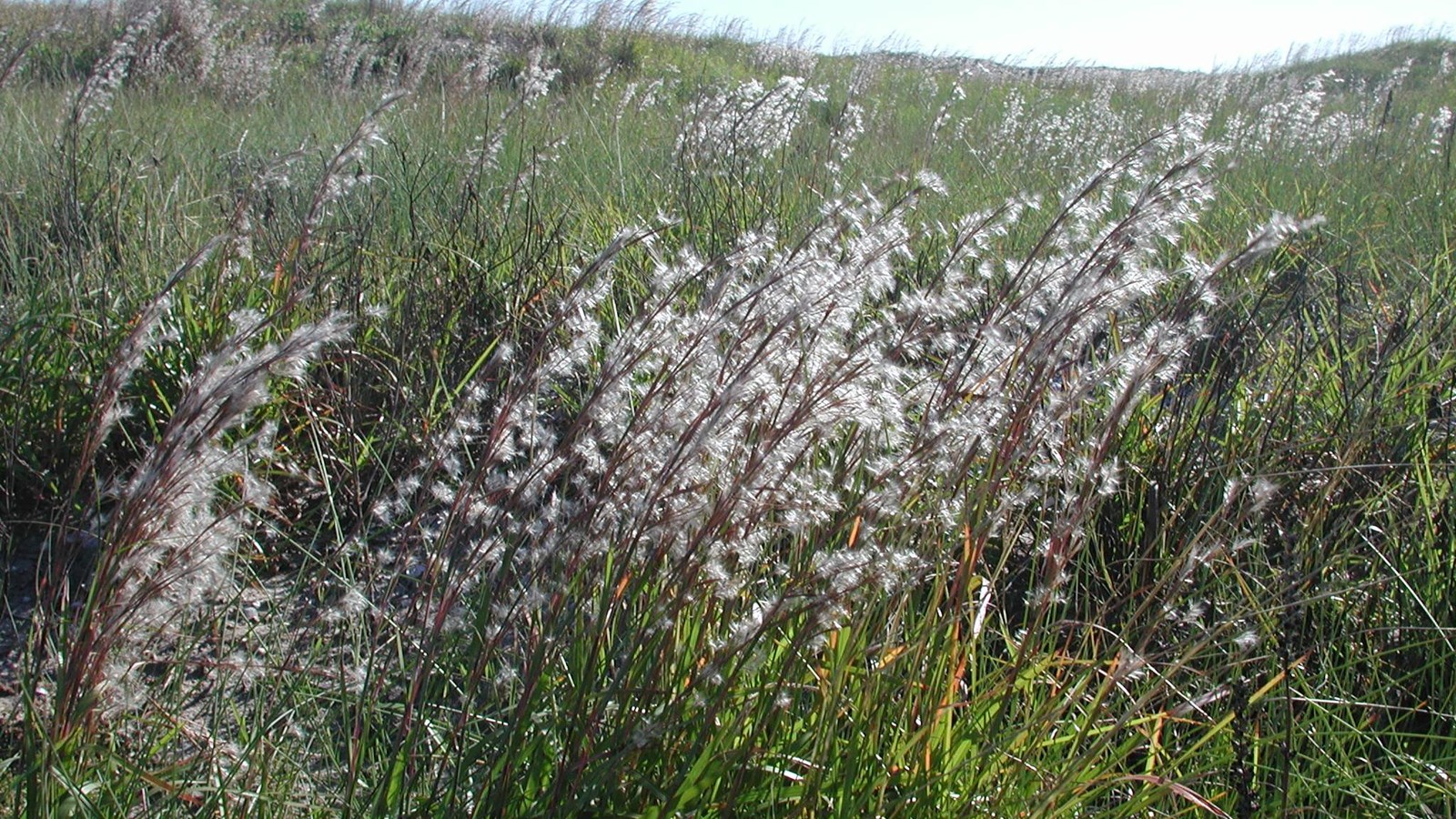Last updated: March 9, 2024
Place
Stop 9: Seacoast Bluestem (Schizachyrium scoparium littorale)

Scenic View/Photo Spot, Wheelchair Accessible
Common Name: Seacoast Bluestem
Scientific Name: Schizachyrium scoparium littorale
Family Name: Poaceae
Duration: Perennial
Size: Up to 5 feet, but normally 1-2 feet tall
Leaf Arrangement: Alternate
Blooming Months: Summer, Fall
Distribution: AL, CN, DE, FL, GA, IL, IN, LA, MA, MD, MS, NC, NY, OH, PA, SC, TX, VA, WV
General Description
Seacoast bluestem, Schizachyrium littorale, is the most abundant grass on the island. It is an attractive grass forming upright clumps of slender green leaves which have a tinge of blue at the base. It has striking clusters of fluffy, silvery-white seed heads which often persist into winter and seem to shine under sunlight. The most outstanding feature of this grass may be the bronze-orange fall foliage color. This species is not as tolerant of excessive salt spray and can therefore be found in the grasslands of the island or on the side of the dunes facing away from the gulf.
Park Wildlife Ecology/Connections
Because of its bunchgrass growth pattern, Schizachyrium littorale is a good cover for ground nesting birds, like the Northern Bobwhite quail. The Gulf Coast kangaroo rat may also benefit from the cover that the high-density grass provides. In terms of predation and grazing, butterflies and grasshoppers have been known to feed on Seacoast Bluestem. Grazing animals take advantage of the abundance of this grass, especially the cattle that once historically grazed the island.
North American Ethnobotany
The Comanche people used the grasses’ stems by burning them and using the ashes for syphilitic sores, as well as in ceremonies. The Lakota people would use the grass as a fur-like insulation in their moccasins during the winter.
